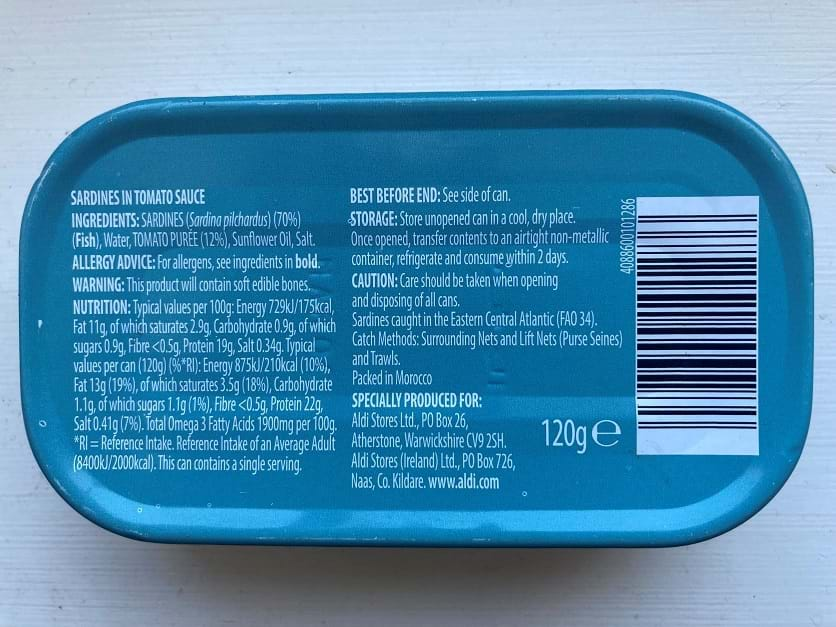Allergen labelling laws
Allergen labelling is important to protect the health and safety of consumers, some of whom may be severely allergic to certain ingredients and foodstuffs.
Food businesses in the production, retail and catering sectors are required to provide allergen information and follow labelling rules. This is set out in food law (Opens in a new window).
This means that food business operators must:
- provide allergen information to the consumer for both prepacked and non-prepacked food and drink
- handle and manage food allergens effectively in food preparation

14 common allergens
The most common allergens must be included on all food labels. These common allergens are:
- Cereals containing gluten
- Crustaceans (such as prawns, crabs and lobsters)
- Fish
- Eggs
- Peanuts
- Soybeans
- Milk
- Nuts
- Celery
- Mustard
- Sesame seeds
- Sulphur dioxide and sulphites at levels above 10mg/kg or 10mg/litre expressed as SO2
- Lupin
- Molluscs (such as mussels and oysters)
Changes to allergen labelling for prepacked for direct sale foods
From 01 October 2021 foods which are prepacked for direct sale to the consumer must be labelled with any allergenic ingredients.
Prepacked direct sale (known as PPDS) products are foods which a business, such as a fish and chip shop or a fishmonger, may package on site for sale later. This may be for convenience such as less mess handling foods, hygiene reasons, or to maintain quality. Foods packaged in this way can look identical to food that is prepacked in a production facility for the final consumer.
We have set out the new guidance on this page. This guidance is also available as a PDF to make it easier to print.
Prepacked for Direct Sale (PPDS) allergen labelling guidance_ PDF for print
What is the new legislation on prepacked direct sale products?
The labelling requirements are not the same as for prepacked foods but will require:
- The name of the food – for seafood this must be the name permitted in the fish labelling regulations. There is more information about this on our Fish Labelling page.
- An ingredients list, and;
- Any of the 14 allergens listed above emphasised in the ingredients list, if these are present in the food, emphasised every time they appear in the ingredients list;
Food is considered to be prepacked if it is enclosed in packaging so that its content cannot be altered or modified unless the packaging is opened or damaged.
You may choose to protect your foods from contamination or damage but doing this could be considered PPDS and therefore must be labelled in compliance with the new rules.
Examples of PPDS and non PPDS products or foods
We have listed some common examples in fish and chip shops and fishmongers which would be classed as Prepacked for Direct Sale and require allergen labelling. We have also listed examples of foods sold loose that are not classed as Prepacked for Direct Sale.
| Prepacked for Direct Sale (PPDS) | Foods sold loose (not PPDS) |
|
Homemade tartar sauce placed in an individual container before a customer makes their purchase, which is sold to them in the same individual container. Full ingredients used to make the sauce would need to be listed and any allergens highlighted. If you use multi-ingredient foods (for example, mayonnaise) as an ingredient you must include the list of ingredients as shown on the label. If any of these ingredients are changed (for example, a different brand of mayonnaise) you must check the new ingredients list and amend your product label with the changes. |
Homemade tartar sauce in a large individual container (pot/tub) before a customer makes their purchase which is then sold to them in a smaller individual container (pot/tub). |
|
Mushy peas, curry sauce or gravy in an individual container (pot/tub) before a customer makes their purchase which is sold to them in the same individual container (pot/tub). Full ingredients used would need to be listed and any allergens highlighted. |
Mushy peas, curry sauce or gravy in a Bain Marie before a customer makes their purchase which is placed in an individual container (pot/tub) with the customer’s order |

| Prepacked for Direct Sale (PPDS) | Foods sold loose (not PPDS) |
|
A buttered bread roll, cob, barm cake, bread bun, teacake in a sealed or folded bag before a customer makes their purchase which is sold to them in the same sealed or folded bag. Full ingredients of the bread and any spreads would need to be listed and allergens highlighted. The spread used will also have to use the correct legal name. For example, butter or vegetable spread. |
A buttered bread roll, cob, barm cake, bread bun, teacake stored loosely in a plastic lidded container/tub before a customer makes their purchase which is sold to them in a sealed or folded bag. |
|
Raw fish fillets, cold smoked seafood or hot smoked seafood which is vacuum packed before a customer makes their purchase which is sold to them in the same packaging. Any ingredients must be listed and any allergens highlighted. This could be the legal name followed by the allergen. For example, Cod (fish). |
Raw fish fillets, cold smoked seafood or hot smoked seafood which is loose before a customer makes their purchase which is sold to them in a sealed or folded bag, or vacuum packed to order. |

Further information
The Food Standards Agency and Food Standards Scotland are responsible for enforcing allergen labelling laws. You can find more detailed guidance by following the links below:
- Food Manufacturers Allergen labelling for food manufacturers | Food Standards Agency
- Retailers and Caterers Allergen guidance for food businesses | Food Standards Agency
- Business in Scotland only Food allergy guidance for businesses | Food Standards Scotland | Food Standards Scotland